Diyarbakir: A «Land of Copper» with Eastern Charm
Diyarbakir is an ancient city with a rich history and the perfect place to experience the authentic atmosphere of the East, which is vivid, unembellished, and untouched by the demands of tourism.
In the narrow, winding streets of Diyarbakir’s old district, Sur, it feels as though time has stood still. This place seems to be typical of the tales of One Thousand and One Nights, living by its own principles and adhering to ancient traditions that should be cherished.
Diyarbakir and Atatürk
The exact date of Diyarbakir’s founding and its original name remain uncertain to researchers. The first mentions of this city appear in Assyrian chronicles, recorded around 1300 BCE. At that time, it was the capital of the Aramean kingdom of Bit-Zamani. After the formation of the Assyrian Empire, the city became a provincial center and was named Amid.
The ancient Greeks, Romans, and Byzantines referred to it by nearly the same name, Amida. The modern name emerged during the Muslim conquest, when the Arab Bakr tribe settled in the city’s vicinity. The new rulers began calling it «Diyar Bakr,» which translates to «Land of the Bakrs.» However, the old name remained in use for some time.
In 1937, during a visit to the region, Atatürk resolved the question of what to officially call the city. He decreed that it be named «Diyarbakir,» which translates from Turkish as «Land of Copper.» This decision was tied to the region’s enduring tradition of copper craftsmanship. Even today, the city is renowned for its artisanal copperware, which can be purchased at its bustling bazaar.
What to See in Diyarbakir
City Walls or the «Black Fortress» (Kara Kale)
The massive fortifications of the Old City are rightfully considered Diyarbakir’s hallmark and still leave a strong impression. They were constructed by order of Roman Emperor Constantius II in the mid-4th century CE, making Amida one of the best-fortified cities of its time.
These were tumultuous times: the Roman Empire was gradually losing its former power, and its eastern borders faced the growing threat of the Sassanid Persian Empire. Unlike other nearby major settlements, such as Mardin, Amida was entirely fortified, not just a small part of it.
The primary material used for the construction of the fortifications was black stone quarried locally. This gave the walls their later nickname, Kara Kale («Black Fortress»). The total length of the city walls exceeds 5 kilometers, though some sections were demolished in the second half of the 20th century.
The northern and northeastern parts of the fortress are the best-preserved, with some sections undergoing restoration, a process that continues today. In other areas, the condition of the walls and towers varies greatly.
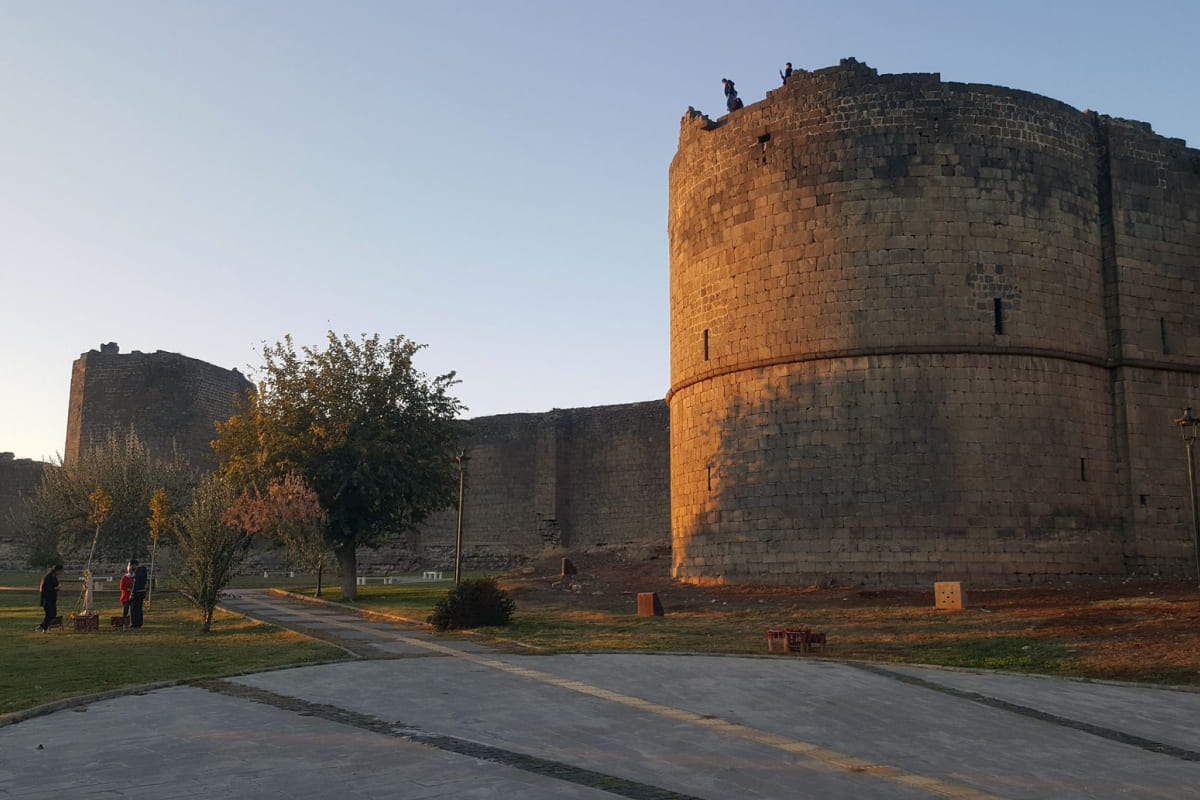
Great Mosque (Ulu Camii)
The Great Mosque of Diyarbakir was built on the site of the Orthodox Church of Saint Thomas the Apostle. The first mosque in this location was constructed shortly after the Arab conquest of the city in 639. However, it has not survived to the present day. The Great Mosque took on its current form after a major reconstruction carried out in 1091–1092 by Seljuk Sultan Malik-Shah.
Today, this mosque is considered one of the oldest Islamic structures in the region and is essentially a complex of buildings. It includes two mosques (Hanafi and Shafi’i), two madrasas, minarets, a space for ablutions, and more.

Assyrian Orthodox Church of the Virgin Mary
This is practically the only functioning Christian church in the city. The congregation is very small, numbering between 7 and 30 Assyrian families who still reside in the central part of Diyarbakir. Currently, there is a trend of remaining Christians leaving their ancestral lands for European countries.
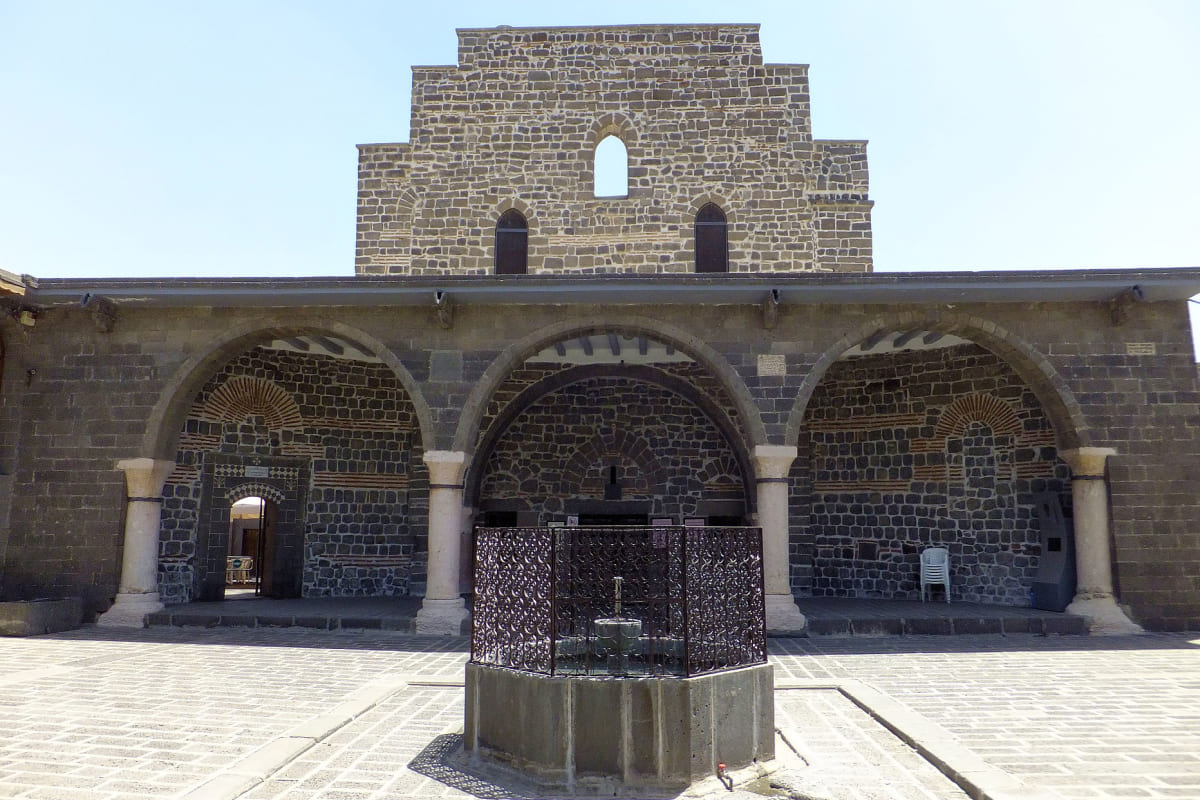
Caravanserai
In the past, Diyarbakir, a key point on the Great Silk Road, had more than one caravanserai. Today, however, the name refers to a single remaining structure, which has been transformed into a large boutique hotel. Entry to this attraction is entirely free, even for those who are not hotel residents.
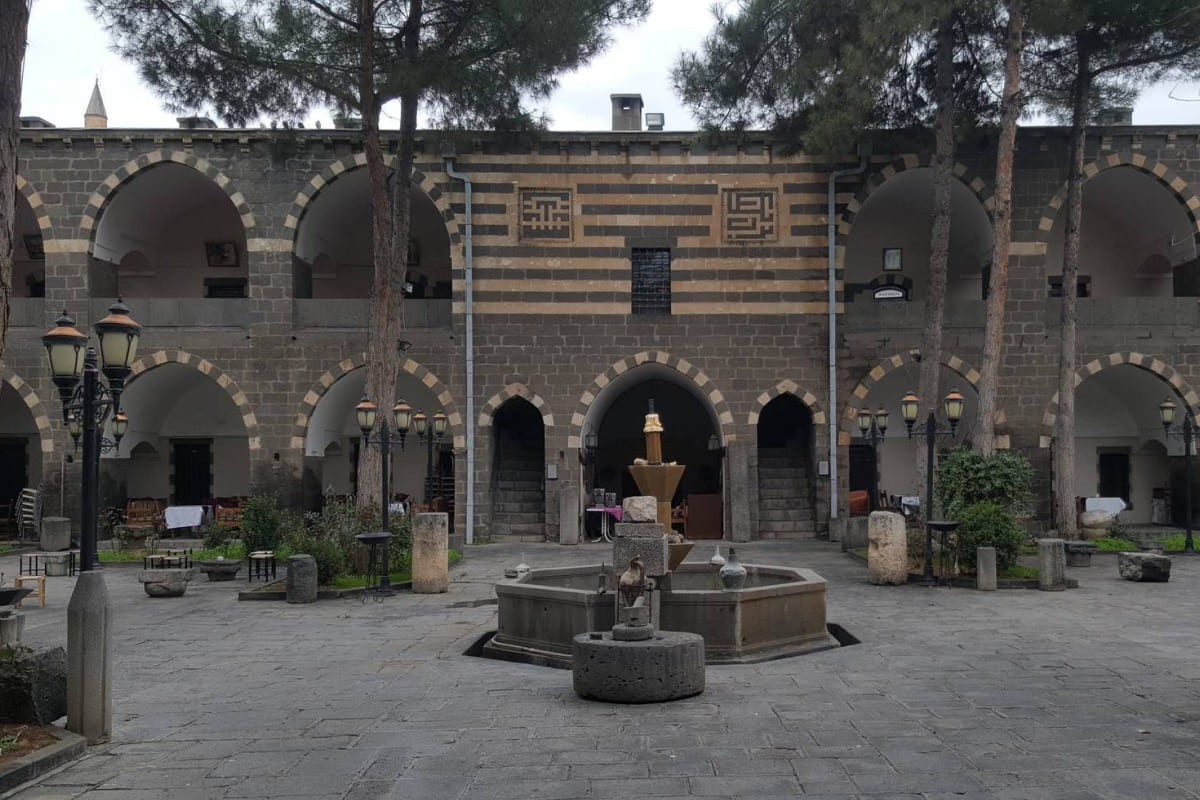
Dicle Bridge
This bridge was constructed during the reign of the Kurdish Marwanid dynasty, with its completion in 1065. Currently, the Dicle Bridge is in good condition. It spans 178 meters and features ten arches.
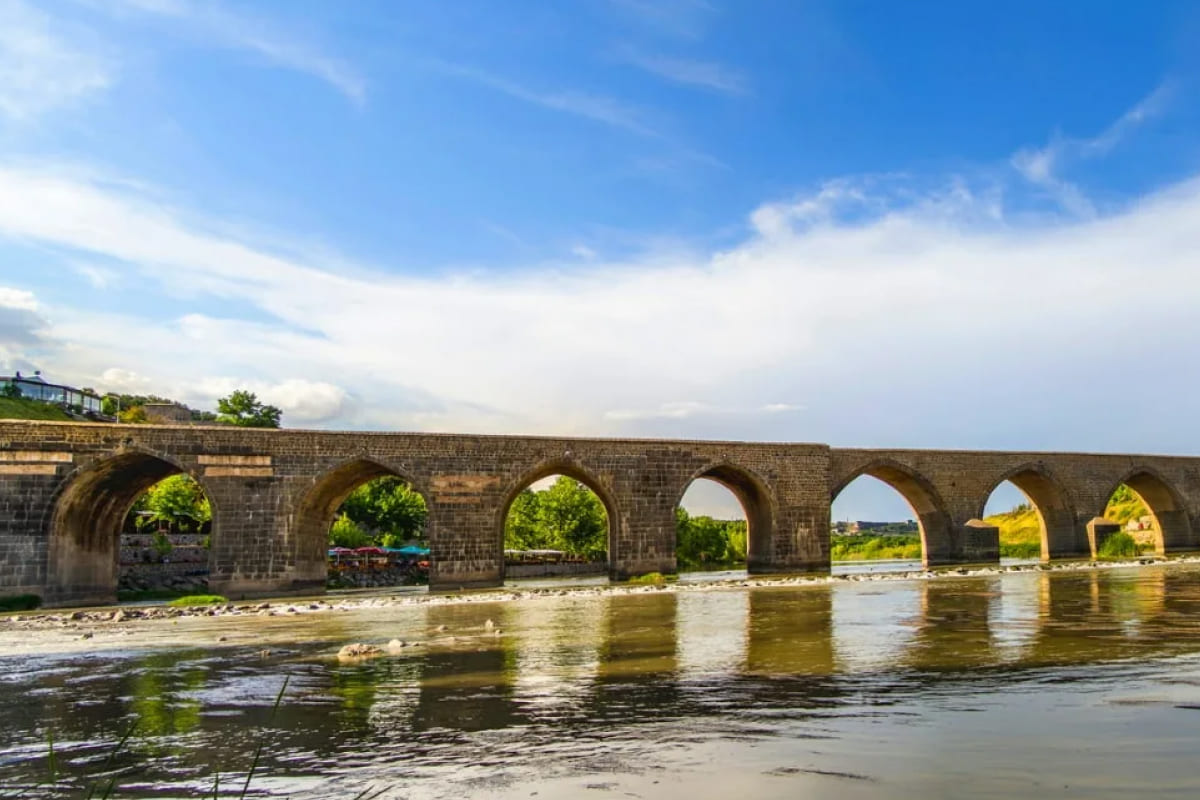
Famous Local Dishes
Ciger Kebab
This popular Turkish kebab made from lamb liver originates from the Diyarbakir province (although Gaziantep and Şanlıurfa may claim otherwise) and is, in some ways, the culinary symbol of the city. Despite the name «kebab,» this dish is essentially liver skewers.
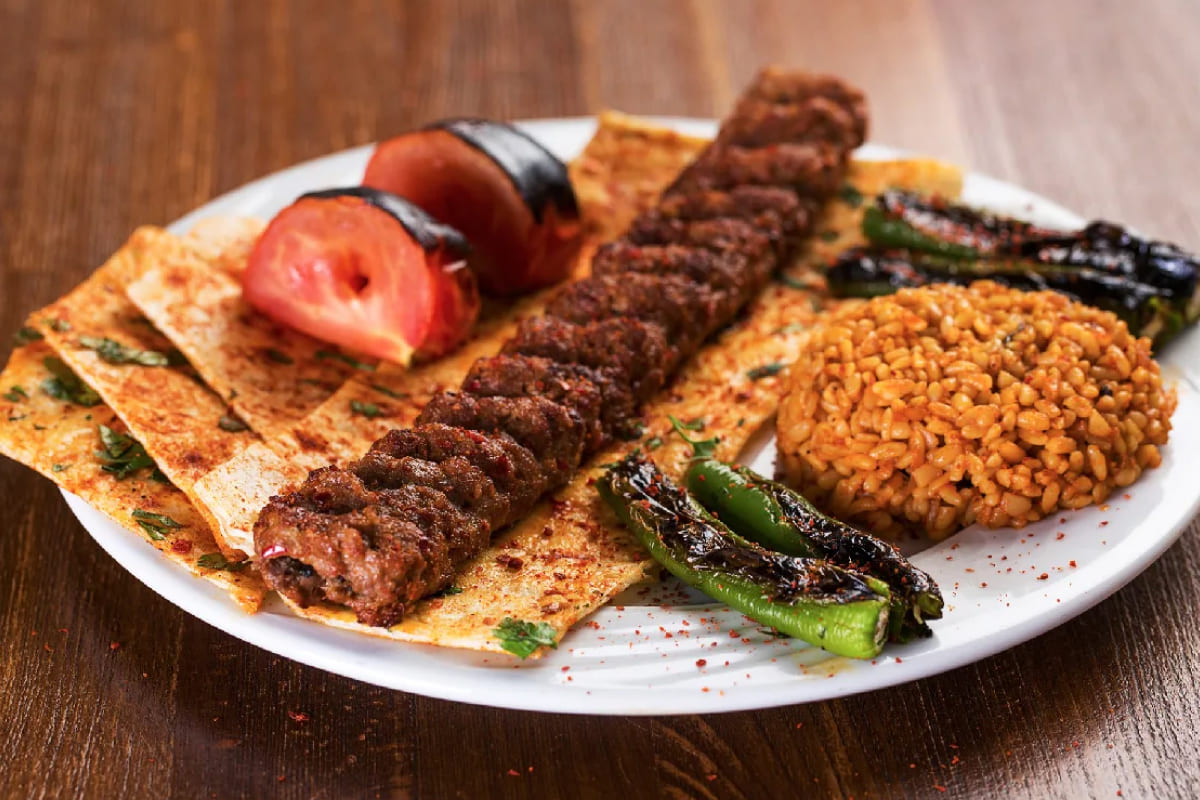
Içli Köfte
Small croquettes made from bulgur (cracked wheat) filled with a spiced beef or lamb mixture. Although it originates from Arabic cuisine, it is considered a local specialty in southeastern Turkey.

Bulgur Pilav
A pilaf made from bulgur. It is usually served as a side dish but can also be enjoyed as a main course. This dish is a great option for vegans, who often find limited choices in Turkey’s traditionally meat-heavy cuisine.


